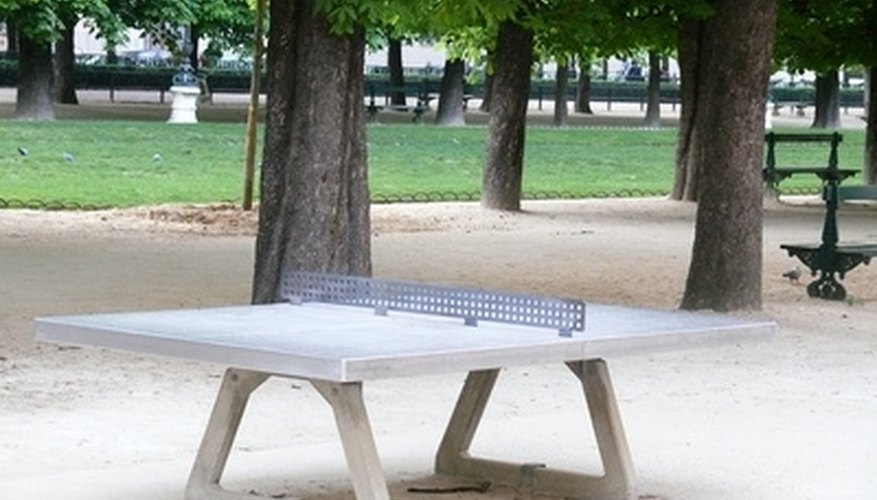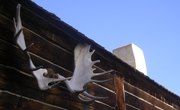
Ping-pong tables are made of particle board that is really just glue mixed with sawdust. This makes it susceptible to water damage that will cause the playing surface to swell where affected and the table to play unevenly. Most ping-pong enthusiasts say the only way to fix this is to replace the damaged board with a new one. However, if that is out of the question, you can get your original table back to usable condition with a little work and a few materials.
Items you will need
Sandpaper of different grits, from coarse to fine
Sanding block
Mixable wood filler powder filler
Clean cloths
Rubbing alcohol
Spatula
Ping-pong table paint
Sand down the damaged spots on the ping-pong table's particle board playing surface. Sand these spots down to slightly below the level of the playing surface. Smooth the spots as much as possible, taking care to remove all loose fibers and dust.
Mix the powder wood putty to a thin, smooth consistency according to the manufacturer's instructions. Apply a very thin coat of the wood putty over the damaged areas; smooth and feather it at a sharp angle with the spatula. Allow this to dry completely before proceeding.
Sand down the wood putty to the level of the playing surface. Smooth and feather in the wood putty with the finest grade of sandpaper. Lightly sand and dust the entire surface for the new layer of ping-pong table paint. Wipe the surface with a clean cloth soaked in rubbing alcohol.
Carefully apply the ping-pong table paint per the manufacturer's instructions. Apply as many coats as necessary to give the table the proper playing surface.
Tips
- Close your eyes and lightly rub your hands over the surface of the table to check for areas that need more smoothing before applying the new surface paint.
Tips
- Close your eyes and lightly rub your hands over the surface of the table to check for areas that need more smoothing before applying the new surface paint.
Writer Bio
Billy Ray has been writing since 1994. He writes a popular featured column on the sports Web site Bleacher Report and has been licensed in loan origination and real estate. He is an EPA-certified Lead-based-paint renovator. Billy has taken courses in real estate, commercial lending and home renovation in addition to college courses in writing at Southern Oregon State University.



